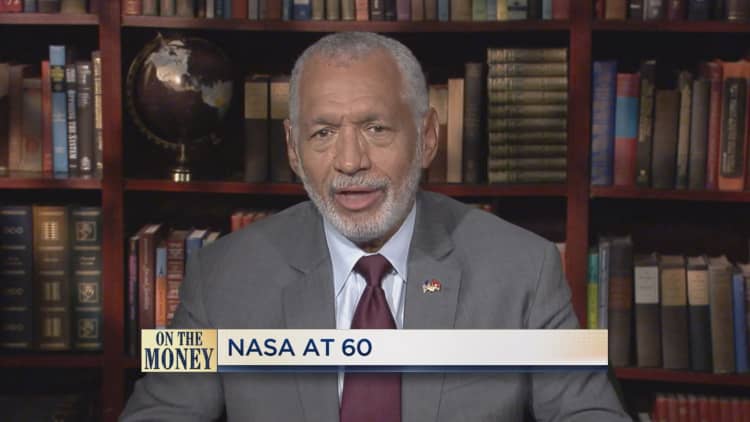China launched the Chang'e 4 spacecraft atop a Long March 3B rocket on Friday in a milestone mission to land a rover on the far side of the moon.
While the dark side of the moon has been seen and mapped before, the successful landing of Chang'e 4 would represent the first time any spacecraft has touched down there. The mission is part of China's heavy investment in lunar exploration and growing capabilities in space through the China National Space Administration.

Chang'e 4 comes about two years after China made the first soft landing on the moon since 1976. Similar in design to that Chang'e 3 craft and its "Jade Rabbit" rover, the Chang'e 4 spacecraft will carry a bigger payload and more capabilities. The space agency will use the craft to study geological conditions on the far side of the moon.
It will take Chang'e 4 about three days to travel to the moon, where it will spend about three weeks in orbit. The lander and rover are expected to touch down on the Von Karman crater sometime around Jan. 1. The crater is a relatively flat spot on the moon's far side, according to a GB Times report, although the landing will present many new challenges for China. The rover will be able to communicate with Earth thanks to a relay satellite China launched into lunar orbit in May.
The Chang'e name comes from the Chinese goddess of the moon. In the ancient tale, Chang'e died after taking an elixir. When she flew to the heavens, she landed on the moon as her final resting place.
The mission's main contractor, the China Aerospace Science and Technology Corporation, declared the launch as a success on Friday, as the spacecraft headed toward the moon.
China is quickly expanding its space capabilities – through both CNSA and state-backed companies. China led among countries expanding market share in the space industry during the third quarter of this year, according to a report by investment firm Space Angels.
"The simple but often missed point is that this new space age is global, which seems to get lost in the U.S.," ARK Invest analyst Sam Korus told CNBC about the Chang'e 4 mission.
2018 has seen China pour more than $217 million in space companies, nearly matching the $230 million invested in all of last year. Of the $16.1 billion invested in private space companies and partnerships since 2009, China now represents 3 percent, with about half a billion dollars. That may not seem like much – but nearly all of China's investment has come since 2016.
– CNBC's Yun Li and Reuters contributed to this report.


